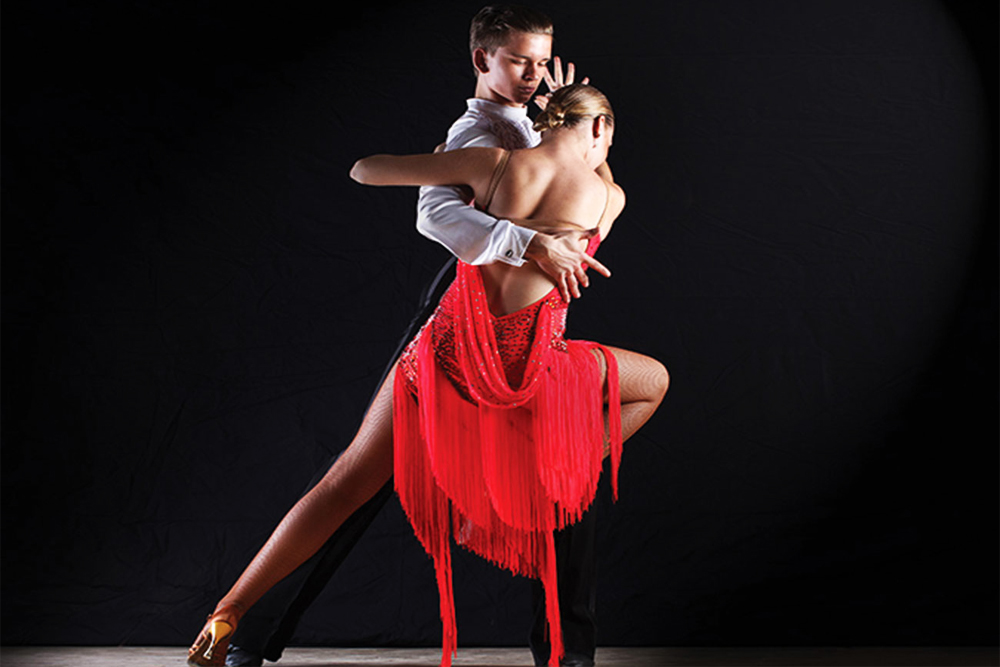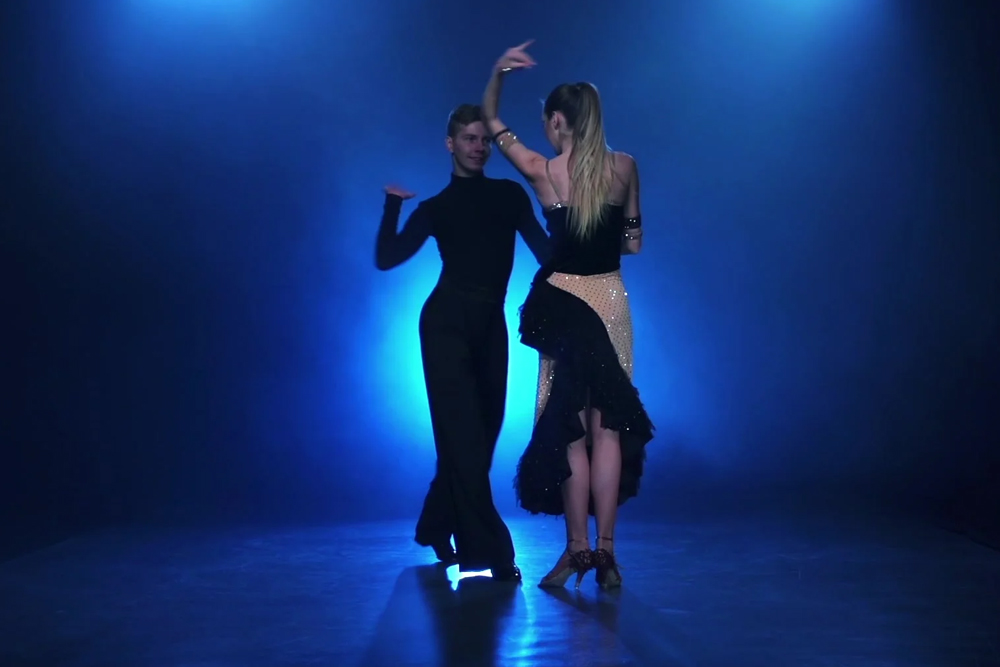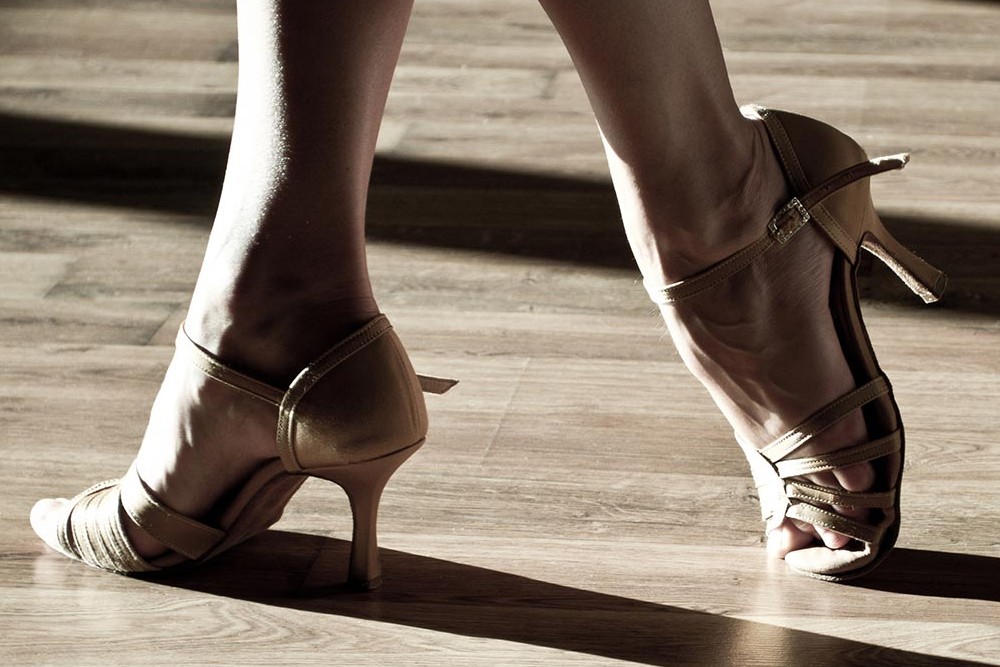GETTING STARTED
Rumba Walks are a staple of the Rumba dance because they are included as a significant part of most of the figures. Many competition judges like to say that if you don’t do Rumba Walks in your routine there is nothing to judge.
There are numerous types of Rumba Walks, including delayed walks, but for this article we will focus on the technique for the basic progressive Rumba Walk. These are often danced poorly, especially by social dancers. This article is designed to help you better understand how to get the look that you see from top dancers. Done well, Rumba Walks look effortless, as well as looking smooth, elegant and sexy all at the same time. There is no difference in technique for man or lady in the Rumba Walks.
We have to start at the beginning and that is your posture. You need to stand with your head directly over your shoulders, belly button pulled in and your weight distributed over the frontal part of your feet. Make sure your backside is understood and not sticking out. The weight is forward but your body is vertical. Shoulders and shoulder blades should be down allowing the chest to open dint pull the shoulder blades back as that is excessive.
FORWARD WALKS

A Rumba Walk is nothing like the way we normally walk. When we walk down the street we extend the leg in front of us starting with the heel then gradually move onto it collecting the back foot to arrive under our bodies so that it can swing forward ( Not so in Rumba).
In Rumba Walks body moves ahead of the foot. Think of moving the spine continuously which will move your entire body. At a certain point, the foot quickly slides out to arrive underneath the body just in time to keep you from falling. We like to think of it as “catching “the body. The foot takes on a characteristic that is almost like flicking the foot so that the heels strike the ground almost immediately though softly. There is only the tiniest delay in time between the instant that your foot strikes the ground and when your body arrives over the foot. This allows the body to continue moving forward to create the same “out of balance” body placement in time for the next beat of the music. In this sense, you are moving “body, foot, body, foot” with the feet arriving just in time to catch the body weight.
The entire foot has to arrive on the floor, flat on the number count. You cannot have your foot out in front of you on the number and you cannot have the heel upon the number. It must be a flat foot on each number in the music. On top of that both legs must be straight as the body arrives over the foot.
Use the back leg to create pressure on the floor. The back foot remains straight just long enough to create a nice visual look before it bends to move. But at all times there is pressure on the floor even with the back foot. Never allow it to lose that pressure.
It helps to have your feet very slightly turned out as this increases your balance and allows the proper rotation of hips. The late movement of the back foot pushing into the floor allows the hip connected to the back foot to rotate slightly in that direction before releasing. That rotation is what moves the hips. Never try to create hip motion. Instead, allow proper use of leg and foot action to create natural hip rotation.
BACK WALKS

Back walks in Rumba are very different from forward walks. About the only things that remain the same are your posture and the fact that your feet never leave the floor.
For Back walks you place the moving foot behind you with a straight leg, then the heel comes down as you move your body weight over the foot and collect the front foot for the next step.
Source credits:
https://delta.dance/2017/08/perfecting-rumba-walks/

